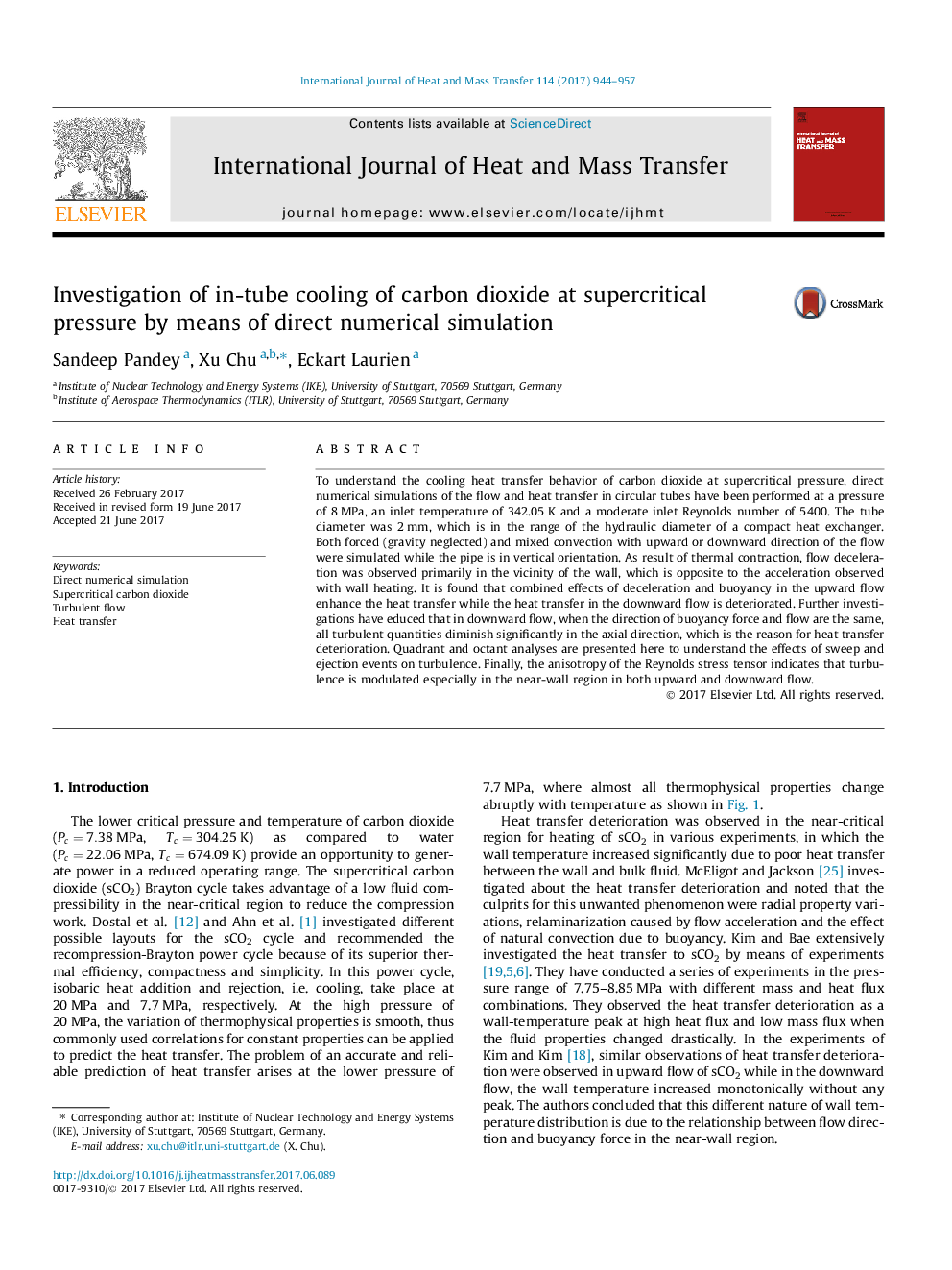| Article ID | Journal | Published Year | Pages | File Type |
|---|---|---|---|---|
| 4993921 | International Journal of Heat and Mass Transfer | 2017 | 14 Pages |
Abstract
To understand the cooling heat transfer behavior of carbon dioxide at supercritical pressure, direct numerical simulations of the flow and heat transfer in circular tubes have been performed at a pressure of 8Â MPa, an inlet temperature of 342.05Â K and a moderate inlet Reynolds number of 5400. The tube diameter was 2Â mm, which is in the range of the hydraulic diameter of a compact heat exchanger. Both forced (gravity neglected) and mixed convection with upward or downward direction of the flow were simulated while the pipe is in vertical orientation. As result of thermal contraction, flow deceleration was observed primarily in the vicinity of the wall, which is opposite to the acceleration observed with wall heating. It is found that combined effects of deceleration and buoyancy in the upward flow enhance the heat transfer while the heat transfer in the downward flow is deteriorated. Further investigations have educed that in downward flow, when the direction of buoyancy force and flow are the same, all turbulent quantities diminish significantly in the axial direction, which is the reason for heat transfer deterioration. Quadrant and octant analyses are presented here to understand the effects of sweep and ejection events on turbulence. Finally, the anisotropy of the Reynolds stress tensor indicates that turbulence is modulated especially in the near-wall region in both upward and downward flow.
Related Topics
Physical Sciences and Engineering
Chemical Engineering
Fluid Flow and Transfer Processes
Authors
Sandeep Pandey, Xu Chu, Eckart Laurien,
